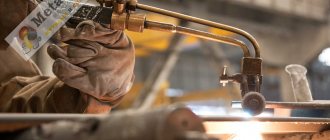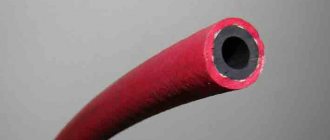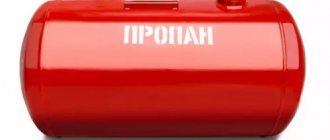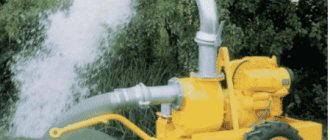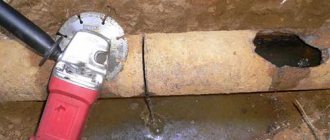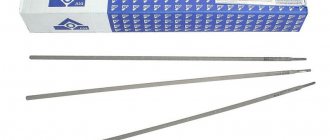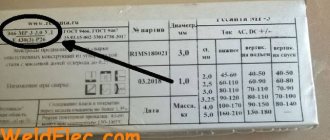| Oxygen hose 12 mm. GOST 9356-75 | rub. 65.00 | More details |
| Oxygen hose 6 mm. GOST 9356-75 | rub. 38.00 | More details |
| Oxygen hose 6.3 mm. GOST 9356-75 | rub. 38.00 | More details |
| Oxygen hose 9 mm. GOST 9356-75 | rub. 48.00 | More details |
| Propane hose 9 mm. for gas welding GOST 9356-75 | rub. 48.00 | More details |
Oxygen hose, hoses for gas welding GOST 9356-75
Rubber pressure hoses designed for gas cutting and gas welding are often called oxygen hoses.
The main purpose of welding hoses is to supply working gases under pressure: acetylene, natural gas, butane, propane, oxygen, as well as liquid fuel to equipment used for gas cutting and welding. Gas or oxygen hoses and hoses are widely used for industrial and domestic purposes - at gas stations, manufacturing, for supplying natural gas to residential buildings, in medical institutions, and so on. The regulatory standard establishing the basic technological parameters for a rubber hose for welding and cutting (oxygen and propane hoses) is GOST 9356-75. The operating ambient temperature of such hoses is allowed within the range from -50°C to +65°C.
Oxygen hoses are produced for use in areas with cold, temperate and tropical climates.
The operating temperature range of rubber goods depends on their climatic design and is:
- from -55 to +70°C – frost-resistant hoses with special HL markings, which are intended for areas with cold climates;
- from -35 to +70°C – for temperate and tropical.
Depending on the purpose for which the oxygen hose is intended, products are divided into three classes:
- Class I: for gases (propane, butane, natural gas, acetylene) under pressure P 6.3 kgf/cm2 (0.63 MPa); The hose is red.
- Class II: for supplying flammable liquids (gasoline, kerosene, white spirit or mixtures thereof) under pressure P 6.3 kgf/cm2 (0.63 MPa). The hose is yellow.
- Class III: for oxygen under pressure, two modifications: P 20 kgf/cm2 (2 MPa) and (4 MPa). The hose is blue.
Scope of application of the hose
Oxygen hoses, for example, in production, are indispensable in order to supply substances such as oxygen, propane, acetylene and atmospheric air that come from stationary devices. Such stationary devices can be an oxygen line, an acetylene or propane cylinder. Delivery is carried out from these products to the place where industrial work is carried out. In addition, oxygen hoses are successfully used in the production of medical equipment. Most often, you can see the use of such a hose in a medical life support system that supplies oxygen, or in a special suit, the main task of which is also to supply oxygen from the cylinder to the mask.
Customer reviews of this item vary greatly. Some buyers are quite satisfied with their purchase; they say that the hose can withstand loads and does not tear or crack. However, there are other statements. For example, they say that an ordinary red acetylene hose, designed for 6 MPa, cannot withstand pressure in some cases and breaks. If you study reviews of ordinary rubber hoses, some buyers claim that they often crack.
Symbol and marking of oxygen hose
Each oxygen hose GOST 9356-75 is marked with indelible paint or in relief. The method of marking must ensure its safety and readability throughout the entire service life of the rubber product. For gas welding hoses with a diameter of 6.3 mm. It is allowed to apply markings to the tag and not to the hose itself.
Marking of oxygen hoses GOST 9356-75 contains:
- product designation;
- trademark or name of the manufacturer;
- batch number and release date;
- Quality Control Department stamp indicating product compliance with the requirements of the State Standard.
Colored oxygen hoses are marked with white paint. For black sleeves, the color of the marking depends on the class of the sleeve.
Welding sleeve with longitudinal markings (Fig.)
The marking is applied in the form of a longitudinal line along the entire length of the oxygen hose (intervals are allowed).
The main technical and operational characteristics of oxygen hoses are encrypted in a symbol that contains the following information:
- product name;
- belonging to a class;
- bore diameter value, mm;
- maximum working pressure (calculated), MPa;
- climatic version (for oxygen hoses intended for operation in cold and tropical climates - HL and T, respectively);
- number of the State Standard, in accordance with the requirements of which the welding hose is manufactured.
Labeling, storage, delivery
It is necessary to apply markings to those hoses that will be used in cold climates taking into account the regulatory documentation belonging to these facilities. For delivery or storage, all hoses are tied and placed in coils. The diameter of the resulting coil must be at least 300 mm. Such coils must be tied using fabric tape, the width of which is from 30 to 40 mm. In addition, such a tape must be secured in at least three places. The tape is made of calico or other material that can be used for dressing and ensures the safety of the sleeve packaging.
Standard sizes, design features
The internal diameters of manufactured hoses, as a rule, range from 6.3 to 16 mm. (An error of ±0.5 mm is allowed.) However, the 9mm oxygen hose is most in demand. diameter In this case, the outer diameter is 18 mm. (The error is ±1 mm.). For such a product, the weight of one meter is approximately 240 g, and the minimum bending radius is 90° according to GOST. The sleeve length can be any, GOSTs allow this. The length is agreed between the customer and the manufacturer.
Oxygen hose 9mm. like propane, it has three layers and is made of high-quality materials - the outer and inner layers are made of rubber, the intermediate layer is made of a thread frame. As a result, the oxygen hose has a special three-fold safety margin.
According to GOST, when bending, the minimum permissible diameter of the sleeve should not change by more than 10% of its value and cracks and wrinkles should not appear inside. The service life of one product is on average 18 months, after which ideally the sleeves need to be replaced.
Cutter hoses.
Cutter hoses. 4.50/5 (90.00%) 16 votes
Hoses serve to supply oxygen and flammable gas to the cutter. They are made of vulcanized rubber, with linen or paper gaskets. The internal diameter of standard hoses (according to GOST 8318-57, type “G” replaced by GOST 18698-73) is 9 and 12 mm. For special oxyfuel cutting work, hoses with an internal diameter of 16 and 18 mm can be used.
Diameters of durite hoses.
In installations for cutting kerosene or gasoline with vapor, a durite hose made of rubber of a special composition that is insoluble in gasoline and kerosene is used to supply fuel. The internal diameter of durite hoses is 4 mm.
Oxygen and acetylene pressure hose.
Hoses must be of sufficient strength, especially oxygen hoses, which experience significant pressure during operation.
New hoses for oxygen supply are tested at a pressure of 30 kg/cm2, and hoses for acetylene are tested at a pressure of 10 kg/cm2.
Hoses in service are tested:
oxygen - by 10 kg/cm2;
acetylene - by 5 kg/cm2.
Length of hoses for gas cutting.
The normal length of hoses used is from 8 to 20 m. It is not recommended to use hoses shorter than 5 and longer than 20 m.
In workshops for the preliminary assembly of hull structures, on stocks and afloat, the use of gas hoses up to 40 m in length is allowed, and over 40 m - only in certain cases (with the permission of the chief builder and a representative of the safety department).
Hoses are spliced with brass or steel nipples. To avoid their breakdown and gas leakage, the ends of the hoses are firmly attached to the nipples with soft wire or special clamps. The length of the individual hoses to be connected must be at least 3 m. Connecting hoses with smooth-bore tubes is not allowed.
Before attaching to the cutter, the hoses must be purged with working gases: oxygen - with oxygen, acetylene - with acetylene.
Do not drag hoses, step on them during operation, or place them near heat sources. Hoses must be protected from sparks.
At the end of the work, the hoses are carefully rolled up and hung on brackets or placed in a specially designated place for them.
Did you like the article?! Share with your friends!!!
mechanicinfo.ru
Buy an oxygen hose in Omsk
Prices for oxygen hoses offered by our company are regulated by the manufacturer and are the best on the market. You can buy an oxygen hose in our store in Omsk (the office and warehouse are located in one place) or call us by phone and reserve the size you need.
People come to us with requests:
buy caprolon, caprolon price, caprolon Omsk, caprolactan, caprolactan sheet, fluoroplastic buy, fluoroplastic sheet, buy textolite, textolite sheet, textolite Omsk, fum tape, fum tape price, asbestos cord, asbestos cord buy, buy asbestos cardboard, buy paronite, paronite price, buy plexiglass, Omsk plexiglass, technical plate price, technical plate Omsk, buy conveyor belt, conveyor belt Omsk, buy rubber tracks, rubber track price, buy rubber plates, lubricants Omsk, buy litol, buy grease, buy tsiatim, livestock plate, 88sa glue , buy a watering hose, buy a PVC sleeve, buy polyurethane, polyurethane Omsk, jute rope where to buy, stuffing box price
2001-2011 © Prompostavka LLC – technical and industrial materials. All rights reserved. Website creation - Benefito Advertising & Marketing Group.
Oxygen hoses GOST 9356-75 are used for supplying under pressure acetylene, urban natural gas, propane, butane, liquid fuel and oxygen to devices used for gas welding and metal cutting. According to GOST 9356-75, oxygen hoses can be used in areas with temperate and tropical climates at ambient temperatures from -35 o C to +70 o C, and in areas with cold climates - from; -55 o C to +70 o C.
Purpose and scope
Welding technology is in demand, especially when performing large-scale installations, for example, the construction of hydroelectric and nuclear power plants. This is due to the reliable and efficient technology. The gas provides a high melting temperature at which the edges of the material melt, forming a weld pool. The welding kit is quite simple, it includes a hose for gas welding and cutting metals, gas cylinders, a torch device or cutter. A special load lies on the hoses through which the fuel mixture and O2 are transported. They are produced not only with high quality, but also with state standards.
The product for gas welding work is made in the form of a multilayer structure. The main material is elastic rubber or rubber. A thread frame is installed between the outer and inner layers of rubber, which is responsible for ensuring the design strength of the structure. Reinforcement is done with thread or fiberglass.
What do gas welding sleeves look like?
All rubber hoses for gas welding are assigned to the following classes according to their intended purpose:
- 1 – used for transporting propane-butane and acetylene gases under high pressure.
- 2 – used to move gasoline or other energy carriers in the liquid phase.
- 3 – mounted in schemes for organizing the welding process for the movement of oxygen with high pressure up to 20 atm.
Technical characteristics of hoses by class:
| Allowable diameter (mm) | Allowable pressure (atm) | Classification | Length in bay (m) | Color | |
| 6.30 | 6.30 | 1 | 50.0 | Black + red stripe | |
| 9.0 | 6.30 | 1 | 50.0 | Black + red stripe | |
| 12.0 | 6.30 | 1 | 50.0 | Black + red stripe | |
| 6.30 | 6.30 | 2 | 50.0 | Black + yellow stripe | |
| 9.0 | 6.30 | 2 | 50.0 | Black + yellow stripe | |
| 12.0 | 6.30 | 2 | 50.0 | Black + yellow stripe | |
| 6.30 | 20.0 | 3 | 50.0 | Black + blue stripe | |
| 9.0 | 20.0 | 3 | 50.0 | Black + blue stripe | |
| 12.0 | 20.0 | 3 | 50.0 | Black + blue stripe | |
| 16.0 | 20.0 | 3 | 50.0 | Black + blue stripe | |
Gas hose classes
Depending on the purpose and area of application, oxygen hoses according to GOST 9356-75 are divided into the following classes:
- I – oxygen hoses designed for supplying acetylene, city gas, propane and butane under pressure. The working pressure for which the first class oxygen hose is designed is 6.3 kgf/cm2 (0.63 MPa).
- II – oxygen hoses used for supplying liquid fuel: A-72 gasoline, white spirit, kerosene or mixtures of these liquids at an operating pressure of 6.3 kgf/cm2 (0.63 MPa).
- III – oxygen hoses, operated to supply oxygen at a pressure of 20 kgf/cm2 (2.0 MPa) and 40 kgf/cm2 (4.0 MPa).
Symbols on gas hoses
The symbol for an oxygen hose according to GOST 9356-75 contains:
- product name,
- class indication,
- internal diameter value in millimeters,
- value of the design pressure in MPa,
- if necessary, climatic version,
- as well as instructions from GOST 356-75.
An example of a symbol for a class I oxygen hose with an internal diameter of 16 mm, designed for a working pressure of 0.63 MPa, operable in areas with a tropical climate: Hose I-16-0.63-T GOST 9356-75.
Oxygen hoses intended for use in areas with cold climates have the symbol “HL” in their designation . The design of oxygen hoses for temperate climates, according to GOST 9356-75, does not require an additional marking symbol.
Gas hose colors
Depending on the purpose and area of application, oxygen hoses have different colors.
- The red color of the sleeve indicates that the product belongs to class I, and is intended for supplying acetylene, city gas, propane or butane
- Yellow – class II hoses, for supplying liquid fuels
- Blue – Class III products for oxygen supply.
- Black color of the outer surface of the oxygen hose is allowed, and the product class designation is applied in the form of two colored stripes.
Gas hose quality assessment
Oxygen hoses are flexible products, and with a minimum bending radius, the change in the outer diameter of the product does not exceed 10%.
Criteria for visual quality control of an oxygen hose
- Oxygen hoses manufactured in accordance with the requirements of GOST 9356-75 should not have folds, porosities, bubbles or cracks on the surface of the internal rubber layer.
- The outer surface of the oxygen hose should not contain bubbles, peeling or exposed areas of the load-bearing frame.
- To clarify the criteria for visual rejection of products, a control sample approved in the prescribed manner is used.
Reception of gas hoses
Oxygen hoses are accepted in batches. A batch is understood as products of the same class and size in quantities with a total length of no more than 2000 meters. Each batch of oxygen hoses is accompanied by a quality document containing the following information:
- trademark or trademark and name of the manufacturer
- name of oxygen hoses,
- Class,
- inner diameter
- working pressure and overall length
- batch number
- month and year of manufacture
- designation GOST 9356-75
- stamp of the technical control section confirming the compliance of the quality of oxygen hoses with the requirements of GOST 9356-75.
To check the compliance of the quality of oxygen hoses with the requirements of GOST 9356-75, the products are subjected to acceptance tests in appearance (design, color, size), a leak test under hydraulic pressure, a tensile strength test under hydraulic pressure, a gasoline resistance test of the inner layer (for hoses) oxygen class II), testing the strength of bonds between the elements of the product, monitoring the condition of the internal surface.
Marking
Each oxygen hose must be marked. Each product along its entire length, or at intervals, must be applied by embossing, indelible paint or another method that guarantees the clarity and safety of the designation and marking. The oxygen hose marking contains:
- name or trademark of the manufacturer,
- product class,
- designation of the internal diameter, date of manufacture (month and last two digits of the year),
- the value of the design pressure,
- designation GOST 9356-75.
Storage conditions
- Oxygen hoses must be stored indoors at temperatures from -20C to +25C
- Products should be stored in coils with a height of no more than one and a half meters, or in a straightened form and placed at a distance of at least one meter from heat-emitting devices.
- If oxygen hoses are stored at subzero temperatures, the products must be kept at a temperature before installation
- at room temperature for at least 24 hours.
- During storage, oxygen hoses must be shielded from direct sunlight and heat rays, and be reliably protected from contact with oils, gasoline, kerosene or their vapors, as well as from acids, alkalis and other substances that can destroy rubber or thread frame.
- It is prohibited to store oxygen hoses near operating electronic and other equipment capable of emitting ozone, as well as near artificial light sources that emit ultraviolet rays.
Transportation and storage
Gas welding sleeve (hose) in packaged form
To transport oxygen welding hoses, the products are tied into coils (in three or four places) and covered with plastic film. Transportation is possible using all types of covered transport, subject to compliance with the delivery rules in force for each of them. Each package contains markings indicating the designation of the products and the total footage.
According to GOST 9356-75, storage of gas welding hoses is allowed in closed warehouses at temperatures from –20 to +25 °C. Products can be stored in coils with a maximum height of 1.5 m or in a straightened form at a distance from heat and ozone-emitting equipment. In addition, it is necessary to protect rubber products from sunlight or exposure to light from artificial sources that can emit ultraviolet radiation. Contact with substances that are aggressive to rubber or thread frames - gasoline, kerosene, alkalis, acids, etc. is not allowed.
When storing oxygen hoses at subzero temperatures, the products must be kept at room temperature for at least 1 day before installation. Warming up cannot be accelerated by increasing the temperature.
Guarantees
The manufacturer guarantees that oxygen hoses comply with the requirements of the State Standard - GOST 9356-75. Subject to the conditions of transportation and storage, the guaranteed shelf life of oxygen hoses is two years from the date of their manufacture. The warranty period, provided that the products are installed correctly, is within the warranty period for storing oxygen hoses and is one year.
Additional information can be found on the page » Hoses and hoses » and in » Articles » The minimum price for hoses for gas welding is 30 rubles/linear meter. You can purchase the necessary goods from us, and we will ensure their delivery as quickly as possible. Delivery cost: within Sergiev Posad – free, to other cities – 20 rubles/km.
Gas welding hoses GOST 9356-75 (commonly known as oxygen hoses) are used to supply gases, liquid fuels, and oxygen under pressure to devices for gas welding and metal cutting.
GOST 9356 hoses are produced in three classes: 1st class - acetylene 2nd class - gasoline 3rd class - oxygen
Symbol of oxygen hose : Hose II I-9-2.0-U GOST 9356-75
II I - oxygen hose II I class, 9 - internal diameter 9 mm, 2.0 - the hose is designed for a working pressure of 2.0 MPa, U - oxygen hose is intended for use in temperate climates.
Hoses for gas welding and metal cutting are used at ambient temperatures from -35 0 C to +70 0 C in temperate and tropical climates and from -55 0 C to +70 0 C in cold climates.
Oxygen hose. Price per meter
The purpose of an oxygen hose is clear from its name - it is the transfer of gas from a source to a working device (for example, a burner, if we are talking about gas welding equipment). The main difference from hoses used to supply propane, acetylene or household gas is durability - oxygen hoses can withstand higher pressure. A design feature is the presence of a special cord in the structure of the material. Due to the complicated production of this type of hose, its cost also differs.
[xyz-ihs snippet=”beginning”]
General concepts about oxygen hoses
Oxygen hoses can withstand pressure up to 20 atmospheres. In the generally accepted classification they are classified as third class. Typically, oxygen hoses are marked blue. Since these products transport explosive and flammable gases under high pressure, their operation is subject to fairly strict requirements, the main provisions of which arise from safety regulations. Most often, the choice of oxygen hose depends on its internal diameter. Let's consider what diameters the oxygen hose is produced, the price per linear meter and areas of application.
The vast majority of hoses are produced with an internal diameter from 6 mm to 16 mm, and come in two versions - for cold climates and for temperate ones. The difference between the option for cold climates is the ability not to lose performance characteristics at outside temperatures reaching -55 °C. Oxygen hose is often used for other gases, since its characteristics are better than those of other types of gas hoses.
Oxygen hose 6 mm
A hose with a hole diameter of 6 mm is used in gas welding or gas cutting equipment to supply oxygen and other gases. It is allowed to use acetylene, propane-butane, argon under pressure. In addition, this type of hose can be used to supply liquid fuel in devices for various purposes. The price per linear meter, depending on the country of origin, batch size and other parameters, is in the range of 32–70 rubles.
Remember that not very conscientious manufacturers sometimes add foreign impurities to the rubber composition, which allows them to reduce the cost of production. It is clear that such additives can reduce the operating parameters of the hose. This is especially noticeable at sub-zero temperatures - low-quality products “stink” in the cold. This hose, which is not of very high quality, performs poorly at low temperatures and cracks. Therefore, you should choose products that will meet all the requirements for equipment used when working with gases.
Oxygen hose 9 mm, price per meter
The 9mm diameter oxygen hose can be used for the following:
- as a sleeve for gas cutting equipment;
- in machines for acetylene metal welding;
- for argon-arc welding;
- in semi-automatic devices, for supplying gas to the work area;
- in gas-air burners;
- for gasoline kerosene cutting.
In addition, since the hose is highly durable, there are many places where it can be used safely, including use as automotive fuel lines. The price of a nine-millimeter hose is about 40–80 rubles per linear meter. Again, a lot depends on the size of the batch, the supplier and the manufacturer.
When choosing a high-quality hose, you must choose a frost-resistant option that does not change its properties at temperatures up to – 40 °C. For gas welding equipment, any hose used must be flexible, not bulge, have no peeling or cracks. When bending, the overall diameter should not decrease by more than 10%.
Oxygen hose 12 mm
12 mm oxygen hoses are used not only for transporting gas in gas-flame metal processing apparatus, but also in other industrial and domestic installations where the transfer of gases or liquids is necessary. Maximum pressure - up to 2 MPa. Hoses are used in production to supply air, acetylene or other gases under pressure. In addition, oxygen hoses can be used in medical equipment (in life support systems), as well as for supplying breathing mixture to special suits for various purposes.
